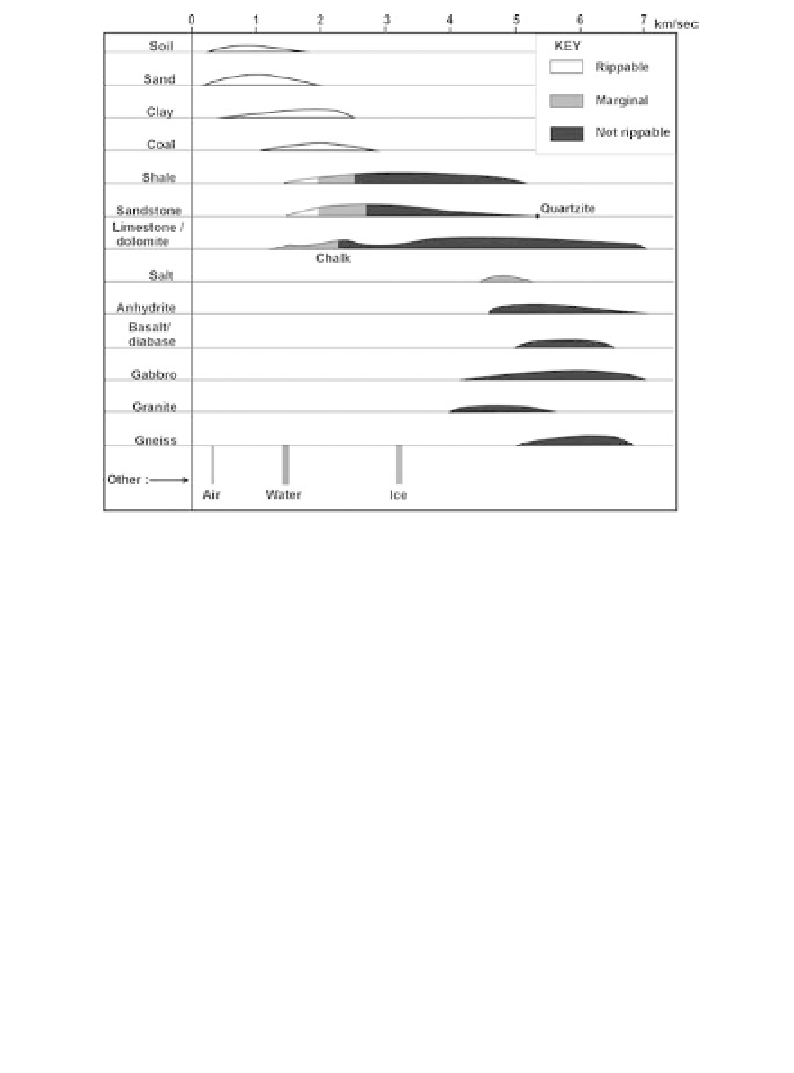Geology Reference
In-Depth Information
Figure 11.2
Ranges of P-wave velocities and rippabilities in common rocks.
The vertical axis for each rock type is intended to show approximately the
relative numbers of samples that would show a given velocity.
330 m s
−
1
)ratherthan
water. Time averaging cannot be applied quantitatively to gas-filled pores,
but dry materials generally have very low P-wave velocities. If they are
poorly consolidated and do not respond elastically, they may also strongly
absorb S-waves. Poorly consolidated water-saturated materials generally
have velocities only slightly greater than that of water, and the water table
is often a prominent seismic interface in P-wave surveys. Because S-waves
do not propagate in either gases or liquids, the water table is invisible in
S-wave surveys (which can sometimes be an advantage).
Weathering normally increases porosity and therefore reduces rock ve-
locities. This fact underlies the rippability ranges shown in Figure 11.2. Few
fresh, consolidated rocks have velocities of less than about 2200 m s
−
1
,and
rocks that are rippable are generally also at least partly weathered.
In dry rocks, the pore spaces are filled with air (
V
=
11.1.4 Ray-path diagrams
A seismic wave is completely described in terms of
wavefronts
, which define
the points that the wave has reached at a given instant. However, only a small

